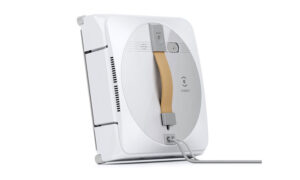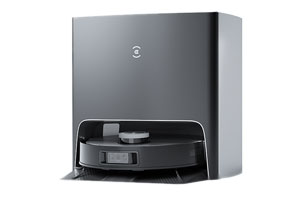Squeaky clean with a few rough edges
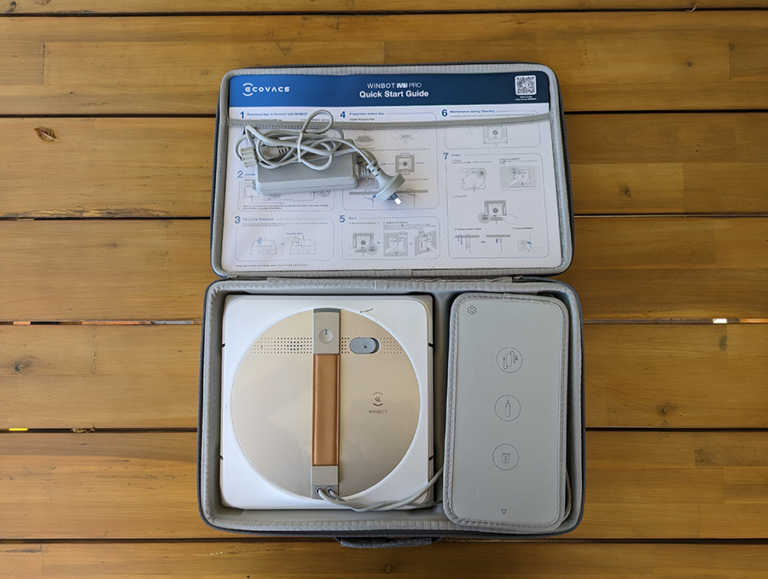
If I made a list of the worst household cleaning tasks, I would put cleaning windows among the worst of the worst. I hate it. And, not necessarily because of the effort involved, but because it is so damned difficult to get a good result.
Therefore, I was pretty excited to discover that Ecovacs had added a robot window cleaner to its extensive range of robot vacuum cleaners and was glad to spend the time reviewing the features and performance. I live in a house with large, neglected windows, so the Winbot W1 Pro had its work cut out for it.
How much does a Ecovacs Winbot W1 Pro cost in Australia?
The Winbot W1 Pro sells for $799 on the Ecovacs website, which is a competitive price at the time of writing. You might be able to save $10 here or $20 there, but there aren’t any big discounts we could find, at least so close to the product’s launch.
There isn’t a great deal of competition to compare this price to either; especially not from other big-name robot vacuum makers. There is a smattering of similar tools, and you can save a few hundred dollars by choosing products like the Hobot 2S or the Robotzoo Gecko 2 or another machine with a punny play on the word robot, but I haven’t reviewed any of these cleaners so I won’t speculate on whether it is worth saving the extra money.
Ecovacs Winbot W1 Pro: key specs and features
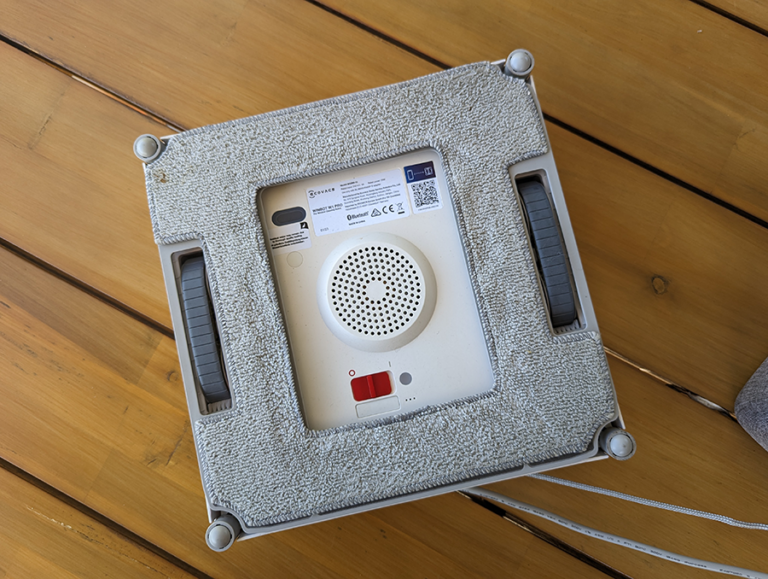
For a robot cleaner, I was surprised to discover how simple the Winbot W1 Pro is, or appears to be. Ecovacs robot vacuum cleaners are now equipped with LiDAR mapping technology, voice activation and live-streaming video cameras.
In contrast, the W1 Pro navigates using sensors in bumpers around the edge of the unit. Much like an older model robot vacuum, this window cleaner drives straight across the window until it bumps into the opposite edge of the window frame, then turns and repeats this until it has moved across the entire pane of glass.
As it cruises from side to side, it intermittently sprays a cleaning solution in front of its path, which is then collected by a microfiber pad underneath. This padding is removable, so it is easy to throw in the wash with the next load of towels.
Probably the most impressive thing to see is the suction power it uses to hold the machine on the glass. To start the W1, you hold it to the window pane and press the power button. The suction kicks in with a mighty whir and you can let go of the unit after a second or two. Pressing the power button again will start the default cleaning cycle.
The sound that it makes to achieve this suction is one of the major drawbacks, and it was loud enough to discourage me from cleaning the windows until I was alone at home. It sounds like a powerful vacuum cleaner running at full strength and the sound is at a higher enough pitch to be a bit annoying.
Ecovacs has integrated the W1 Pro into its Ecovacs Home app, and a majority of the controls you need are settings in the app. Happily, there aren’t too many options to choose from. You can adjust how much liquid is sprayed during the cleaning cycle, how many times the W1 will go over the window per cycle, and whether you need a deep clean or a quick spot cleaning.
There’s also a virtual remote control in the app in case you want to target certain problem areas.
Ecovacs Winbot W1 Pro: but can it clean?
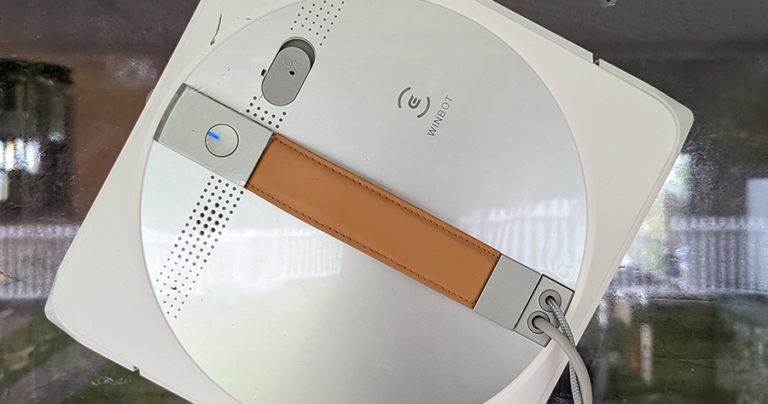
Of course, the million-dollar question is whether the Winbot W1 Pro window cleaner can actually clean your windows or not.
As I mentioned earlier, the problem with cleaning windows isn’t applying a cleaning solution and wiping them, it’s whether the windows are streak-free and crystal clear once you’ve finished.
To this end, the Winbot W1 Pro does a decent job, but it does miss a few spots. After running a deep clean cycle twice, I found that the centre area of each window was clear and clean, but that the edge-sensing bumpers stop the W1 from cleaning effectively to the edges.
The software also has an unusual quirk where it finishes the deep cleaning cycle by leaving the machine in the centre of the window so that when you remove it, the damp cleaning pads leave a W1 Pro-shaped mark of excess cleaning solution. This solution evaporates after a short time, in some cases entirely, but it did leave a few smears on others.
In fairness, it has to stop somewhere, but I’m not sure why it is preferable to pause in the centre of the glass rather than in a corner where it might be less noticeable.
It’s also worth noting that you can’t use the Winbot on dirty windows and you’ll need to wash them down and remove debris before the W1 can polish them up for you.
In many ways, my experience with this window cleaner has been a lot like my experience with robot vacuum cleaners. These tools are great for regular maintenance, but you should still allocate time to deep clean yourself and get into the nooks and crannies missed due to the size and shape of the cleaners.
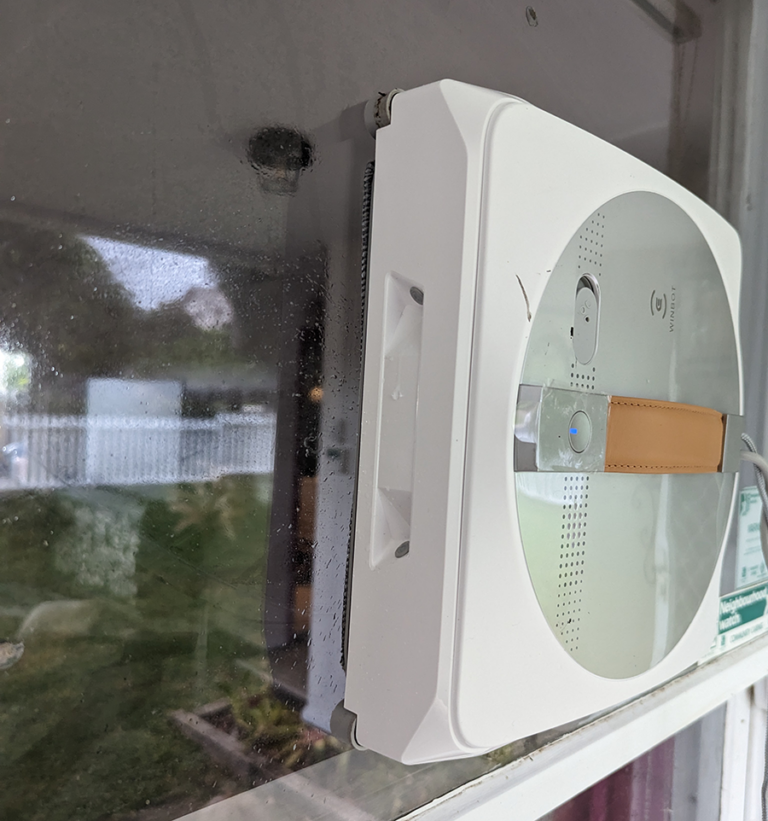
Is it worth buying an Ecovacs Winbot W1 Pro?
In researching for this review I stumbled upon a blog post on the website of Huttcleantech, a competitor which manufactures the Hobot robot window cleaner, and it summed up my feelings pretty succinctly.
“In the current smart life, the window cleaning robot can easily get you out of the labor at home, and of course it is also a wave of welfare for "lazy people" … Of course, if you want to get rid of housework, it must be useful. If you want to work by yourself, it is relatively useless.”
Jokes aside, the Ecovacs Winbot W1 Pro is capable of cleaning windows to a presentable degree, but it is not a miracle worker. If you, like me, are among the “lazy people” who live in a home with large windows and hate cleaning them, this is worth a look.
The $800 ticket price is expensive though, so it might be worth waiting for future discounts.
Related Articles





